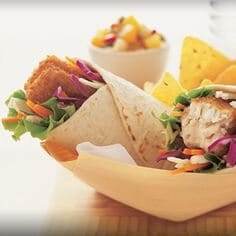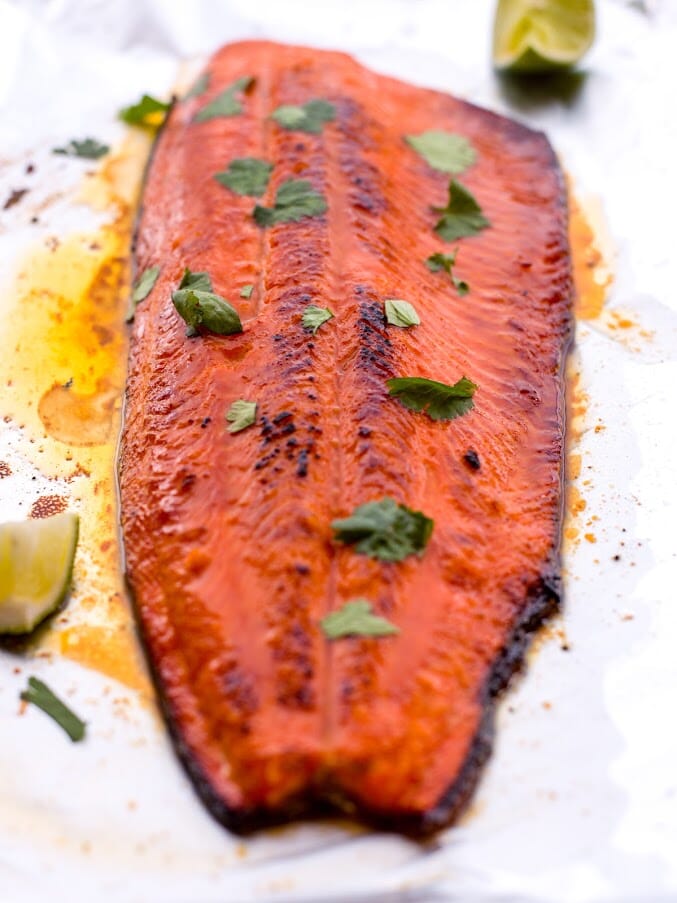The budget proposed by Donald Trump that starts in October puts on the chopping block the agencies and staff in charge of fisheries research and management, weather forecasting, satellite data tracking and the US Coast Guard.
Trump called the cuts a tradeoff to “prioritize rebuilding the military” and to help fund the border wall with Mexico.
The Washington Post broke down a White House memo to the Office of Management and Budget last week that showed the National Oceanic and Atmospheric Administration (NOAA) would lose 26 percent of its budget; its satellite data division would lose 22 percent of its current funding. The National Marine Fisheries Service and the National Weather Service would each face a five percent cut.
The biggest budget hit goes to the Coast Guard which stands to lose $1.3 Billion. Trump’s plan also eliminates the Sea Grant program, a network of 33 training and research programs nationwide.
“Why would you cut a program that has a major return on investment when you’re trying to grow the economy? It just doesn’t make sense,” said Carol Kaynor, Alaska Sea Grant communications specialist at the University of Alaska/Fairbanks, who found out about the cuts via Facebook.
The Sea Grant program has been operating in Alaska for nearly 50 years. Director Paula Cullenberg also was shocked to learn about the funding cut.
“Maybe this was an easy mark and something on a spreadsheet that looked available. As far as I know there wasn’t any in-depth analysis around that,” she told Alaska’s Energy Desk in Juneau.
Slow down and take a deep breath, advised US Senator Dan Sullivan (R-AK), who chairs the Subcommittee on Oceans, Atmosphere, Fisheries, and Coast Guard.
“The President’s Budget request is simply that—a request. Congress holds the power of the purse, and will ultimately fund the federal government,” Sullivan said in an email.
“I have spoken with both OMB Director Mulvaney and Secretary of Commerce Ross about the importance of Alaska’s fishing industry and the necessary federal research and investment that goes into making our fisheries and coastal communities thrive,” he added.
Sullivan said he will continue to advocate and prioritize funding for NOAA and the Coast Guard, “two agencies that are disproportionately important for Alaska.” He said the Sea Grant College Program “also is critical to coastal states.”
Senator Sullivan said he took the lead on a letter to OMB Director Mulvaney, stating that “the reported proposed cuts to the USCG would contradict the stated goals of the President and undermine the ability of the USCG to perform vital missions.”
Fish sticks make the grade
Fish sticks made from Alaska pollock coated with crispy whole grain crusts are set to hit school lunch trays this spring.

It’s a new product offering from the US Department of Agriculture which has purchased pollock in frozen, 50 pound blocks of fillets since 2009. School cafeterias can use the fish in many ways, a system that works well for states or large districts able to buy half or whole truckloads. The new ready-made fish sticks open the door for purchases by smaller schools or districts with fewer resources.
“This gives many more schools the opportunity to serve Alaska pollock,” said Pat Shanahan, program director for the trade group Genuine Alaska Pollock Producers.
GAPP and the Alaska Seafood Marketing Institute have been working for several years with the USDA to add the fish sticks to its food list, which it finally did in January.
They also are doing outreach to inform schools that US dietary guidelines recommend eating seafood twice a week, while studies show that 80 percent of Americans do not.
Schools are an excellent means to address this diet deficit, Shanahan said, and they are showing dieticians to think beyond fish sticks in dipping sauces.
“We’ve come up with a number of recipes that put them in wraps, salads and slider sandwiches. Kids are eating foods they see in restaurants and they are very sophisticated eaters,” she added.
For many kids, school might be the only place where they get to eat fish so it better be good, Shanahan said. Ultimately, the goal is to make America’s kids become life-long fish eaters.
“This opens up long-term potential to sell more Alaska pollock on a consistent basis to schools,” she added. “With 30 million school lunches served every day, if even a small portion are Alaska pollock, it’s a big win for the industry.”
“It’s fantastic,” said Bruce Schactler of Kodiak, ASMI’s global food aid director who helped broker the total January buy of $554 million pounds of pollock at $1.13-$1.16 for a value topping $640 million.
“Our focus now is on getting more people to eat more Alaska pollock in more product forms more often,” Schactler said. “We’re working with all parts of the industry at retail, wholesale, food service and everyone in between to support Alaska’s efforts, whether it be in Washington DC or at Subway headquarters.”
Bay Bounce
A three-month project that promoted Bristol Bay sockeye salmon in Boulder, Colorado boosted sales and is already expanding.

The $700,000 “Wild Taste, Amazing Place” campaign was spawned last September by the Bristol Bay Regional Seafood Development Association, funded by 1,800 driftnet fishermen who pay a one percent tax on their catches.
“We developed a brand and a new look for Bristol Bay Alaska sockeye salmon, and a new consumer facing website,” said Becky Martello, executive director of the association. “Then we developed partnerships with retailers, processors and distributors to make sure everyone was on board.”
In partnership with Rising Tide Communications of Anchorage, the group also collaborated with food stylists and photographers to create snazzy point of sale items, in-ice signs, posters, recipe cards, digital ads and social media support, down to wrapping paper and stickers adorned with the Bristol Bay label.
A big part of the program, Martello said, was training people behind the seafood counters at three retailers to be champions of the brand.
“That went really well,” she said. “We educated them about Bristol Bay and the sheer size of the sockeye run, the unique habitat, and that by selecting Bristol Bay salmon, consumers are supporting individual, small family businesses. That message really resonated with our primary market of millennials and the secondary market of boomers who have that connection to their food.”
The project also hosted workshops and dinners for 40 chefs; 17 Boulder restaurants also featured sockeye salmon for a week.
The branding program was designed to be measurable and replicable. The results, made available this month, were very positive.
“Sales increased 8–14 percent during the promotion period, looking at year over year sales. That was a big win for us. The retailers were really pleased and we’re taking that to the bank,” Martello said.
One retailer plans to expand the sockeye promotion to 30 stores in several locations, and the next phase of the program will grow the program in Colorado and other regions.
“The feedback that we’ve been getting from processors has been really positive, and the fleet seems really happy. Ultimately, that is who we are working to help. If they’re happy, I’m happy,” Martello added.
The sockeye marketing materials are now available to fishermen, retailers and others who are interested. Order them at www.bristolbaysockeye.org
This material is protected by copyright. For information on reprinting, contact Laine Welch via msfish@alaskan.com
TheFishSite News Desk

